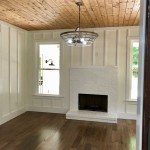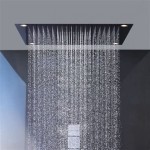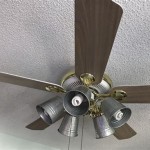Decorating Ceilings With Fabric: A Guide For Homeowners and Homes
Fabric ceilings are a great way to add a touch of elegance and sophistication to your home, in both residential and commercial properties. They can be used to create a variety of looks, from traditional to modern, and they can be customized to fit any space. If you are thinking about decorating your ceiling with fabric, read on for a guide on everything you need to know.
Benefits of Fabric Ceilings
There are many benefits to decorating your ceiling with fabric, including:
- Acoustics: Fabric ceilings can help to improve the acoustics of a room by absorbing sound waves. This can be especially beneficial in rooms with high ceilings or hard surfaces, which can cause echoes and reverberation.
- Insulation: Fabric ceilings can also help to insulate a room by trapping heat in the winter and keeping it out in the summer. This can help to reduce your energy costs and make your home more comfortable year-round.
- Aesthetics: Fabric ceilings are a beautiful way to add a touch of elegance and sophistication to your home. They can be used to create a variety of looks, from traditional to modern, and they can be customized to fit any space.
Types of Fabric for Ceilings
There are many different types of fabric that can be used for ceilings, including:
- Linen: Linen is a natural fiber that is known for its durability, breathability, and wrinkle resistance. It is a good choice for ceilings in high-traffic areas.
- Cotton: Cotton is another natural fiber that is soft, comfortable, and easy to care for. It is a good choice for ceilings in bedrooms and other living areas.
- Silk: Silk is a luxurious fabric that is known for its beauty, drape, and sheen. It is a good choice for ceilings in formal rooms and other special spaces.
- Velvet: Velvet is a soft, plush fabric that is known for its rich color and texture. It is a good choice for ceilings in bedrooms, living rooms, and other cozy spaces.
- Synthetic fabrics: Synthetic fabrics are made from man-made materials, such as polyester and nylon. They are often less expensive than natural fabrics and they are more resistant to fading and staining. Synthetic fabrics are a good choice for ceilings in kitchens, bathrooms, and other areas where they may be exposed to moisture or dirt.
How to Install Fabric Ceilings
Installing fabric ceilings is a relatively simple process, but it is important to follow the instructions carefully to ensure a professional-looking finish. Here are the basic steps:
- Prepare the ceiling: The first step is to prepare the ceiling by cleaning it and removing any dust or debris. If the ceiling is uneven, it may need to be repaired or leveled before you can install the fabric.
- Measure and cut the fabric: Once the ceiling is prepared, you need to measure and cut the fabric to the desired size. Be sure to allow for a few inches of overlap on all sides.
- Apply the adhesive: The next step is to apply the adhesive to the ceiling. You can use a brush or a roller to apply the adhesive, but be sure to follow the manufacturer's instructions carefully.
- Install the fabric: Once the adhesive has been applied, you can install the fabric. Start by centering the fabric on the ceiling and then smoothing it out from the center to the edges. Be sure to remove any wrinkles or creases as you go.
- Trim the fabric: Once the fabric is installed, you need to trim any excess fabric around the edges. You can use a sharp knife or scissors to do this.
- Finish the edges: The final step is to finish the edges of the fabric. You can do this by hemming the edges or by using a fabric glue to create a clean finish.
Care and Maintenance
Fabric ceilings are relatively easy to care for, but there are a few things you need to do to keep them looking their best. Here are a few tips:
- Vacuum or dust regularly: Fabric ceilings should be vacuumed or dusted regularly to remove dust and dirt. Be sure to use a soft brush attachment to avoid damaging the fabric.
- Spot clean spills immediately: If you spill something on your fabric ceiling, blot it up immediately with a clean cloth. Do not rub, as this can spread the stain. If the stain is large or persistent, you may need to call a professional cleaner.
- Avoid direct sunlight: Direct sunlight can damage fabric ceilings over time, so it is important to avoid exposing them to direct sunlight for long periods of time. If you have a fabric ceiling in a room with a lot of sunlight, be sure to use curtains or blinds to protect it.
By following these tips, you can keep your fabric ceiling looking beautiful for many years to come.

Cool Ceiling Decorating Ideas For Your Home

6 Exciting And Creative Ways You Can Decorate Your Home Ceiling Hometone Automation Smart Guide

Types Of Ceiling Designs A Comprehensive Guide To Design Options

Types Of Ceiling Designs A Comprehensive Guide To Design Options

Give Your Ceiling A Special Treatment Architectural Elements Fabric Tiles And More

Cool Ceiling Decorating Ideas For Your Home

Tented Ceilings Add Some Drama To Your Interiors

Ceiling Design Ceilings Armstrong Residential

Ultimate Guide To False Ceiling Design Types Tips Trends For 2024 Designgorhythm

The Ultimate Guide To Vaulted Ceilings Pros Cons And Inspiration
Related Posts








